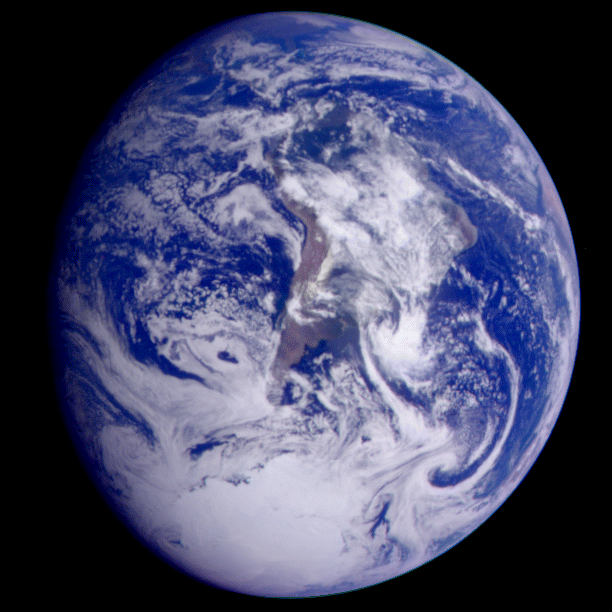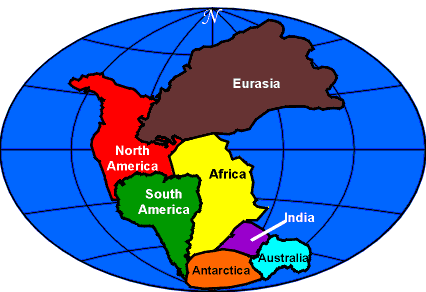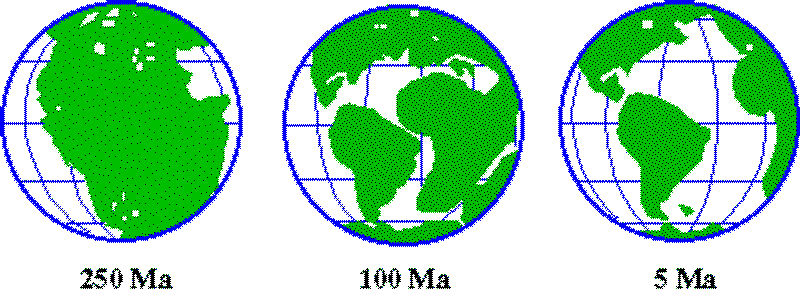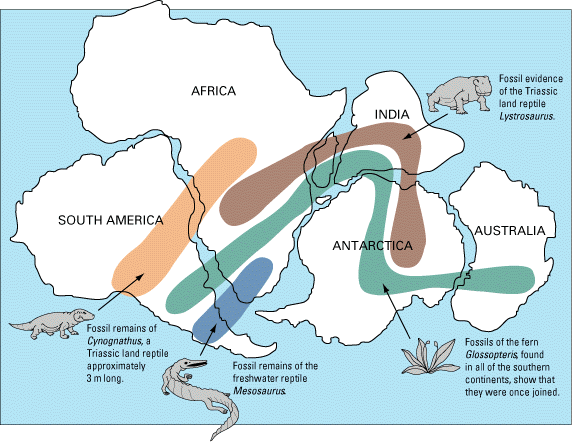

The Pale Blue Dot
There are two things the earth has in rather sharp contrast with the other planets:
Undoubtedly the Earth was heavily impacted at the same time the moon was but its surface has been completely reworked since then so there is no evidence for this event.
On average, the current surface of the earth is 500 million years old
The Earth's Surface is kept young by Plate Tectonics and what follows is a primer on how this basic machine works:
Plate Tectonics means that the crust of the earth is divided into large connected units, all of which are moving relative to one another and colliding with one another in various ways. The idea of Plate Tectonics was first published by the German geologist, Alfred Wegener in 1915 but this theory was largely ridiculed until magnetic mapping of the ocean floor was done in the late 50's. This history of the acceptance of this theory is summarized here .
Summary of Evidence for Plate Tectonics:
This indicates that the floor of the Atlantic
Ocean is created at the mid Atlantic ridge due to crustal separation.
As magma issues forth and solidifies, it records the orientation of
the earth's magnetic field at the time of solidification. These
newly formed rocks are then carried either East or West of the
Mid-Ocean ridge. The floor of the Atlantic Ocean is thus an Age
sequence with newly formed rock appearing at the Mid Atlantic Ridge and
the oldest rocks being at the North American and European Coastlines.
The time of transport from the mid Atlantic ridge to these coastlines
is about 210 million years which indicates a total sea floor motion of
about 1.5 inches per year.
Now it is recognized that the surface of the earth can be divided up
into roughly 10--12 large scale plates
and perhaps a number of smaller ones as in the case of the
Pacific Northwest
 could just mean that the climates and hence vegetation and animal
life were similar
could just mean that the climates and hence vegetation and animal
life were similar
 this
is much harder to explain away especially if the ages of the rock
types are similar.
this
is much harder to explain away especially if the ages of the rock
types are similar.
 Magnetic mapping of the ocean floor revealed
a history of polarity reversals that formed a mirror image about
the Mid-Atlantic Ridge.
Magnetic mapping of the ocean floor revealed
a history of polarity reversals that formed a mirror image about
the Mid-Atlantic Ridge.

Over time the plates drifted apart and individual continents gained their identity.


Ultimately leading to the current network of individual plates:

This idea of connected land masses goes a long way in observing various strong similarities in fossil characteristics in now quite disparate locations:
